 |

Cost
& Management Accounting
(MGT-402)
VU
LESSON#
11
LABOR
There
are three elements of
cost:
�
Material
�
Labor
�
FOH
Labor
costs constitute an important
part of production cost.
Labor cost is and element of
total
payroll
expense of an entity. Payroll
expense consists of:
�
Labor
cost
�
Administrative
staff expenses
�
Selling
and distribution staff
expenses
The
total labor cost incurred by
a manufacturing entity includes four
separate elements:
�
Direct
labor cost (this is expensed
on production and it is traceable in
the cost unit)
�
Indirect
labor cost (this is also
expensed on production but it is
not traceable in the
cost
unit)
�
Abnormal
labor cost (this is the
labor cost that is lost
because of break-down of power
and
machinery
etc.)
�
Labor
related cost (this includes
overtime pay, bonus pay, shift
allowances, and other
benefits)
From
the cost and management
accounting point of view,
the distinction between direct
labor
cost
and indirect labor cost is
very essential.
Direct
Labor Cost
Direct
labor cost is that portion
of salaries and wages which
can, as a practical matter, e
traced
with
and charged to a cost unit.
Thus the wages paid to
employees/workers engaged in
manufacturing
of a job or process like bricks, spinning
and weaving, are direct labor
cost.
Broadly
speaking, labor costs will
be direct if:
a.
There
is a direct relationship to the product
through a process,
b.
The
labor cost can be measured
in the light of this
relationship, and
c.
The
labor cost is sufficiently material
(significant) in amount.
However,
the main criterion of
determining the direct labor
cost is that if it is economically
and
conveniently
be identified /traced with a
product, it is a direct labor
cost.
Indirect
Labor Cost
These
are the costs which
are not identifiable with or
incurred directly in the
production of a
specific
goods or services but are
applicable to manufacturing activities generally,
salaries and
wages
paid to supervisors, foremen,
storekeepers, clerical staff member
will constitute the
indirect
labor costs. Mostly costs of
service departments, supervisory and
engineering
departments
are indirect labor
costs.
Salaries
& Wages
Salary
is a fixed amount of remuneration
paid to the employees after
a month or a year.
Wage
is remuneration of the employees/workers
who work on hourly or unit
produced basis.
Determining
Wage Rates
Wage
rates are determined on the
basis of requirements of a job. Job
analysis is
breaking up of a
job
into basic elements or operations
and studying them in detail
to find out the
duties,
responsibilities
and skills involved in
it.
69

Cost
& Management Accounting
(MGT-402)
VU
It
is a process of determining the
contents and characteristics of a
job, the conditions
under
which
performance is to be carried on, the
qualifications required in the worker, methods
and
techniques
used and other conditions
and skills involved. This
basic object of job analysis
is to
ascertain
the relative worth of each
job through an objective
evaluation so that
suitable
remuneration
can be fixed for each
Job and worker.
Advantages
of Job Analysis
a.
Job
analysis facilitates selection of
right type of workers
according to the job
requirements.
It helps in training the
workers accordingly.
b.
Job
analysis helps in fixing
suitable wage rates for
different jobs according to
their
characteristics,
skills required and hazards
involved.
c.
It
helps in Job evaluation and
merit rating thereby
improving the decision
making
ability
of the supervisory staff in regard to
transfer, promotion and
placement.
d.
Job
analysis facilitates the
settlement of disputes with
workers in regard to duties-
wages,
transfer and other disciplinary
action by providing complete requirements of
different
jobs.
e.
It
helps in placing employees on the
most suited jobs and thus
increasing their
satisfaction
and morale. It helps in reducing labor
turnover, absenteeism and
removes inequ-
alities
in wages and
salaries.
Time-Keeping
In
an industrial enterprise accurate
time keeping is very
essential, normally, recording of time
is
done
for two purposes:
a.
For
administrative and payroll purposes,
and
b.
For
cost analysis and
apportionment of overhead among different
departments.
Wages
to casual and temporary
workers are paid on time
basis while others are
paid on piece
rates
with minimum guaranteed
wages. Payment of wages to such
categories of workers is
dependent
on the proper recording of total
time spent by a worker in the
factory and on the
Job.
Purposes
of Time-Keeping
Recording
of time is essential for the
following purposes:
a.
Preparation
of Pay Rolls, where the
workers are paid on time
basis.
b.
.Meeting
the statutory requirements.
c.
For
internal administration, like increments, pension,
provident fund, gratuity and
leave
benefits.
d.
For
proper distinction between direct
and indirect costs, normal
time and overtime,
and
regular and late
comers.
e.
For
overhead rates, if based on
labor hours.
f.
For
enforcing regularity, discipline and
ensuring daily requirement of labor force
in the
factory.
Methods
of Time-keeping or Recording:
Following
are the usual methods of recording
attendance of workers at the
gate of a factory.
1)Manual
Methods:
A.
Attendance
Register, and
B.
Token
system
2)
Mechanical
Methods:
A.
Time
recording clock, and
B.
Dial
Time Recorders
3)
Electronic
Methods:
A.
Smart
card
70

Cost
& Management Accounting
(MGT-402)
VU
Manual
Methods
Attendance
Register method (Hand written
record):
Under
the method a register with
necessary columns like name,
identity no. of the employee
and
arrival
and departure time is maintained.
In
a large factory, separate
registers may be maintained for
each department but in a
small
factory
one register may serve the
needs of the entire
factory.
The
practice of recording attendance or roll
calls may conveniently be
adopted depending
upon
the
nature of employees and
their number. As soon as a worker
enters into the premises of
the
factory
the necessary entries in the
attendance register are completed
either by calling the
name
of
each worker or by some other
physical method.
Disk
or Token or Check
method:
Under
this method each worker is
allotted a metal disk or token
bearing his identification. On
each
disk the name and
number of the worker is
engraved or painted. All the tokens or
disks are
hung
on a board serially note the
arrival time of the
workers.
As
soon as a worker reports for
duty on the appointed time
he/she removes his/her disk
from
the
board and puts into a box.
Immediately after the
scheduled time for entering
into the
premises
of the factory the board is removed
and a list is prepared of
all such disks or tokens
not
collected
and dropped into the box by
the workers. The late comers
collect their disks and
hand
over
personally to the time keeper.
The list of late comers is
prepared separately. The tokens
not
removed
from the boards represent
the absentee workers.
Mechanical
Methods
Different
mechanical devices have been
designed for recording the
exact time of the
workers.
These
include:
a.
Clock Card
b.Dial
Time Records.
Clock
Card
The
attendance of workers in this
system is marked by a time recording
clock on a card each
worker
is given a clock card usually
for one week duration. These
clock cards are serially
arranged
and
kept in a tray at the gate
of the factory and as the
worker enters into the
gate he picks up
his/her
clock card from the
tray, puts it in the time
recording clock that records
the exact arrival
time
at the space provided on the
card against the particular
day.
This
process is repeated where the
worker leaves the factory
after his/her day's work.
Other
particulars
of time in respect of lunch,
late arrivals, early leaving and
overtime are printed in
red
so
as to distinguish these from normal
period spent in the factory.
This is very popular
method
of
recording the attendance of workers. The
format of clock card is given
below:
71
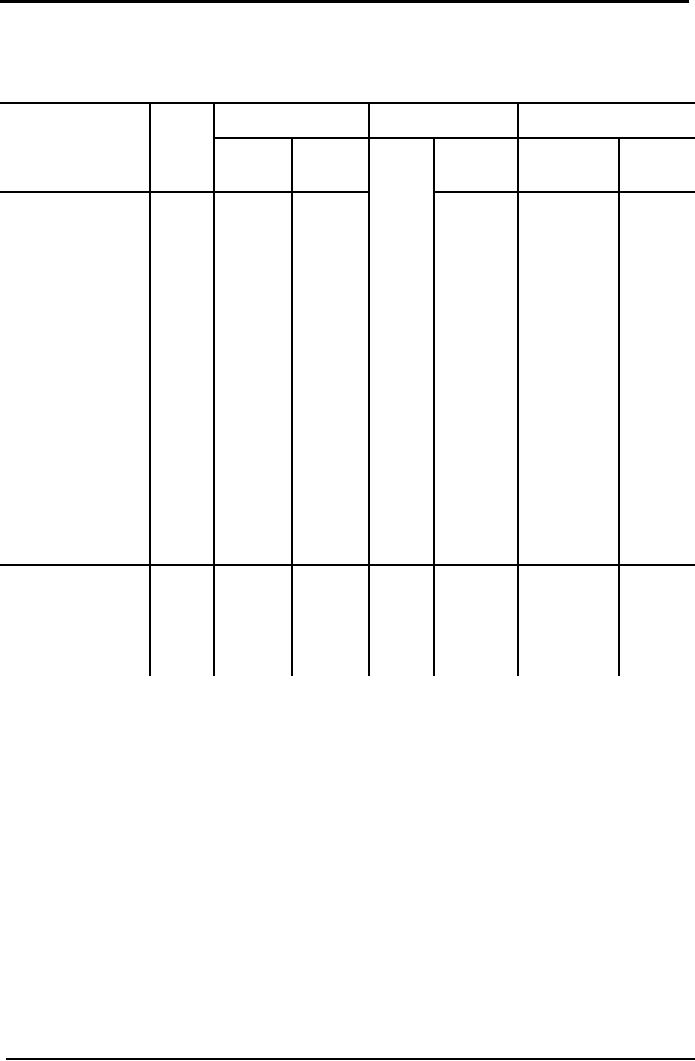
Cost
& Management Accounting
(MGT-402)
VU
FUTURE
SHINE CO. LTD
Clock
Card
Worker's
Name____________ Department ___________ Token #
___________
Week______________
Days
Time
Regular-time
Over-time
Total-time
In
Out
In
Out
Normal
Over-
time
time
Monday
A.M.
P.M.
Tuesday
A.M.
P.M.
Wednesday
A.M.
P.M.
Thursday
A.M.
P.M.
Friday
A.M.
P.M.
Saturday
A.M.
P.M.
Sunday
A.M.
P.M.
Calculations
of
Normal
Over-
Rate
Amount
Deductions
Net
i
Hours
payable
Worked
Time
keeper____________ Foreman_______________ Payroll
Clerk ______________
Worker____________
72

Cost
& Management Accounting
(MGT-402)
VU
Electronic
Methods
In
the era of Information
Technology wastage of time is
considered as a sin. Although
manual
and
mechanical methods produce accurate results
but both are time
consuming methods. Same
results
with less time consumption
and lesser chance of errors
can be obtained with
the
application
of electronic devices. Now a days
clock cards have been
substituted with the
smart
cards.
Smart
Card
Clock
cards may be replaced by smart
cards. These record the same
information, but it is
recorded
on the magnetic strip on the
card. Smart cards may
also be used for other
purposes not
related
to the payroll.
Job
Time Sheets
For
proper labor cost analysis,
it is essential that the
worker records, in details,
his/her activities
of
production and time he/she
spends on each job
correctly. Time spent by a worker on
the job,
process
or activity may be recorded
manually, mechanically or electronically
depending upon the
nature
and size of the enterprise.
Recording of time spent by the worker on
the job is better
known
as time booking. The objects
of time booking are:
1.
To
ensure that the time
paid for is properly
utilized.
2.
To
ascertain the labor cost
for each individual job
and the cost of work
done
3.
To
determine the rate of absorption of
overhead expenses based on direct
labor and
machine
hour methods against each
job.
4.
To
ascertain and minimize idle
time.
5.
To
evaluate each employee's
performance by comparing the actual
time taken with the
budgeted
time.
For
achieving these objectives it is very
important that clear
instructions should be issued
and
proper
forms are designed for
recording work time.
73
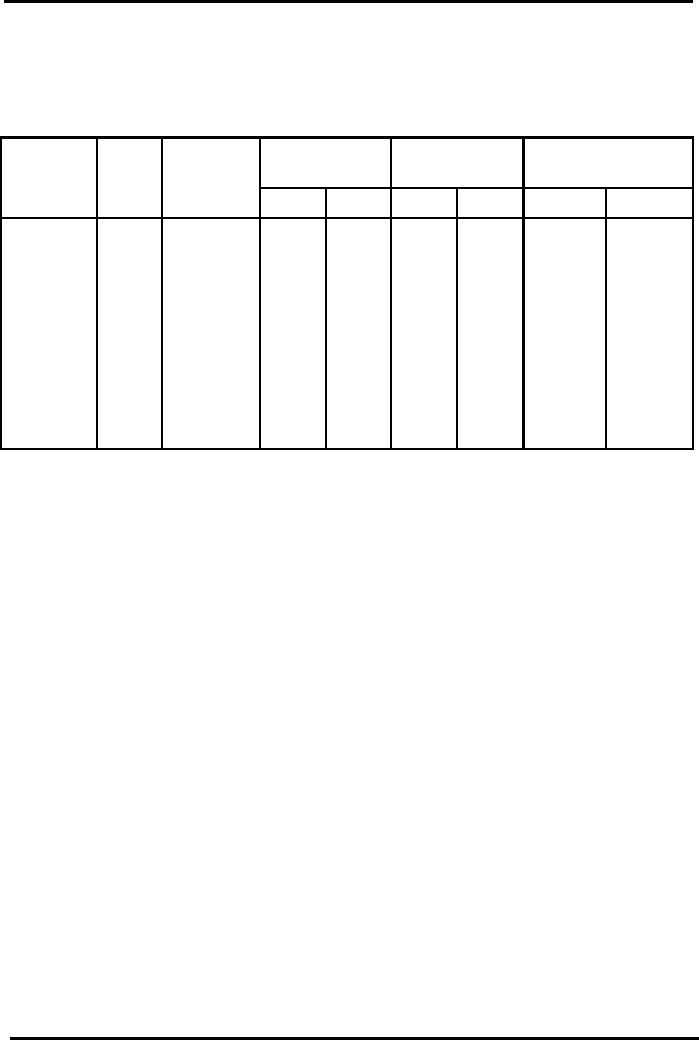
Cost
& Management Accounting
(MGT-402)
VU
FUTURE
SHINE CO. LTD.
Daily
Time Sheet
Worker's
Name____________ Department ___________ Token #
___________
Date______________
Job
or
Work
Descriptio
Time
Total
Hours
Cost
work
done
n
of work
order.
On
Off
Ordin
Overti
Rate
Amount
Total
hours_____________
Workers______________
Total
cost_______________
Fore
man____________
PAYROLL
SYSTEM
The
payroll is a list of the
employees of the organization
and the money due to
each. A payroll
list
is produced each time that
employees are paid.
�
Wage earners are paid
weekly.
�
Salary earners are
paid monthly.
Sometimes,
employees earn a fixed
amount every week or every month.
Sometimes there are
variations
in the amount employees
earn, due to overtime payments or
bonuses or commissions
which
add to their pay.
GROSS
PAY AND NET PAY
DEDUCTIONS
The
total amount earned in a
week or month by an employee is
called his or her gross
pay.
This
is not the amount of money
that the employee receives,
because deductions are taken
away
from
the gross pay, and the
employee receives just the
gross pay less deductions.
This is known
as
the employee's net
pay.
The
deductions from pay are
usually a combination
of:
�
Statutory deductions and
�
Non-statutory or voluntary
deductions.
Statutory
deductions are
deductions from pay that are
made by law. In the Pakistan
income tax
is
taken away from gross pay
and paid to Income Tax
Department, which is the
main tax-
collecting
department of the
government.
77

Cost
& Management Accounting
(MGT-402)
VU
Income
tax is collected
from employees every time
they are paid, and
this system of tax
payment
is therefore known as Pay As You
Earn or PAYE. An employer is required by
law to
deduct
income tax from the wages
and salaries of all their
employees.
The
employer in effect acts as an
unpaid tax collection agent
for Income Tax
Department.
Non-statutory
deductions are
voluntary deductions from pay
that the employee
chooses
to
make. Examples of these
are:
�
Subscriptions to a trade union
�
Contributions by the employee to a
pension scheme.
Rupees
Gross
pay
***
Less:
Statutory
deductions
(***)
Non-statutory
deductions
(***)
Net
pay or take home"
pay
***
What
this means is that when an
employee is paid, he or she
receives the net pay or
take home
pay,
and the employer pays
the other amounts to other
organisations ('external agencies') such
as
Income
Tax Department, a trade
union and a pension scheme
organisation.
COST
OF LABOR TO THE EMPLOYER
Although
the employee only receives
the net pay, all the
deductions have to be paid to
other
organisations,
and it is the employer who
has to pay them. Therefore,
you might think that
the
total
cost of wages and salaries
to the employer is the total
of gross wages. In fact the
total cost
of
wages and salaries to an
employer is higher than the
total gross wages and
salaries. This is
because
there are two elements in
Provident Fund
Contributions.
�
There
are employees' provident
fund contributions. These
are a part of the
statutory
deductions
from gross pay,
�
There
are also employer's provident
fund contributions. These
are additional payments that
the
employer has to pay the
government.
The
amount payable is related to
the amount earned by the
employees, but it is nevertheless
an
additional
labor cost for the
employer.
To
an employer, the total cost
of wages and salaries is
therefore:
�
Gross
wages and salaries,
plus
�
Employer's
provident fund
contributions.
OTHER
DEDUCTIONS
The
employer and employee may
agree that other deductions
should be made from
the
employee's
salary. Examples are:
(a)
Pension contributions.
(b)
Deductions under the payroll
giving scheme (charity
giving).
(c)
Deductions under a payroll
savings scheme,
(d)
Trade Union subscriptions.
(e)
Deductions under Holiday Pay
schemes,
(f)
Certain other voluntary deductions
agreed by the employer (for
example, fees for use of
the
company
sports club).
78

Cost
& Management Accounting
(MGT-402)
VU
PRACTICE
QUESTION
The
following figures have been extracted
from a trader's records in
respect of wages and
salaries
for
July.
Rupees
(i)
Wages and salaries
(gross)
6,300
(ii)
Income tax
1,600
(iii)
Employees' pension contributions
600
(iv)
Employer's pension contributions
700
1
What
is the total amount the trader will
have to pay for wages and
salaries for July?
A
4,100
B
4,800
C
6,300
D
7,000
2
What
is the net pay received by
employees?
A
4,100
B
4,200
C
4,800
D
5,600
PROCESSING
THE PAYROLL
To
process the payroll, an
employer must, for each
employee:
Calculate
the gross
wage or
salary for the period.
1.
Calculate
the income
tax payable
out of these earnings.
2.
Calculate
the employee's
state benefit contributions that
are deductible.
3.
Calculate
the employer's
state benefit contributions. For
all employees collectively,
4.
the
employer must:
Calculate
any non-statutory
deductions.
5.
Prepare
a payslip
showing
the gross pay, deductions and
net pay.
6.
Make
the payment of net
pay to the
employee.
7.
Make
the payments
of all the deductions from
pay and the employer's state
benefit
8.
contributions
to the appropriate other
organisations.
Record
the payroll costs
in the
accounting system.
9.
PAYSLIPS
A
payslip will accompany each
payment of salary or wages to an
employee. It shows how
the
amount
paid has been arrived at,
how much income tax and
state benefit contributions
has been
deducted.
The provision of a payslip detailing
the income tax and provident
deductions is
another
responsibility of an employer as required by
the national law. Other
deductions will also
be
shown on the payslip.
Getting
a payslip means that even if
the employee receives wages
or salary payments directly
into
his
bank account, he is notified of the
payment and how much it is
by receiving the payslips,
Payslips
might be distributed to employees at
work, or posted to their
home address.
A
payslip must show details
of:
�
Gross
pay
�
Deductions
(itemized separately)
�
Net
pay (Net pay is sometimes
called 'take
home pay').
However,
there isn't a standard
layout for a payslip and so
payslips of different employers
can
look
very different.
An
example is shown
below.
79
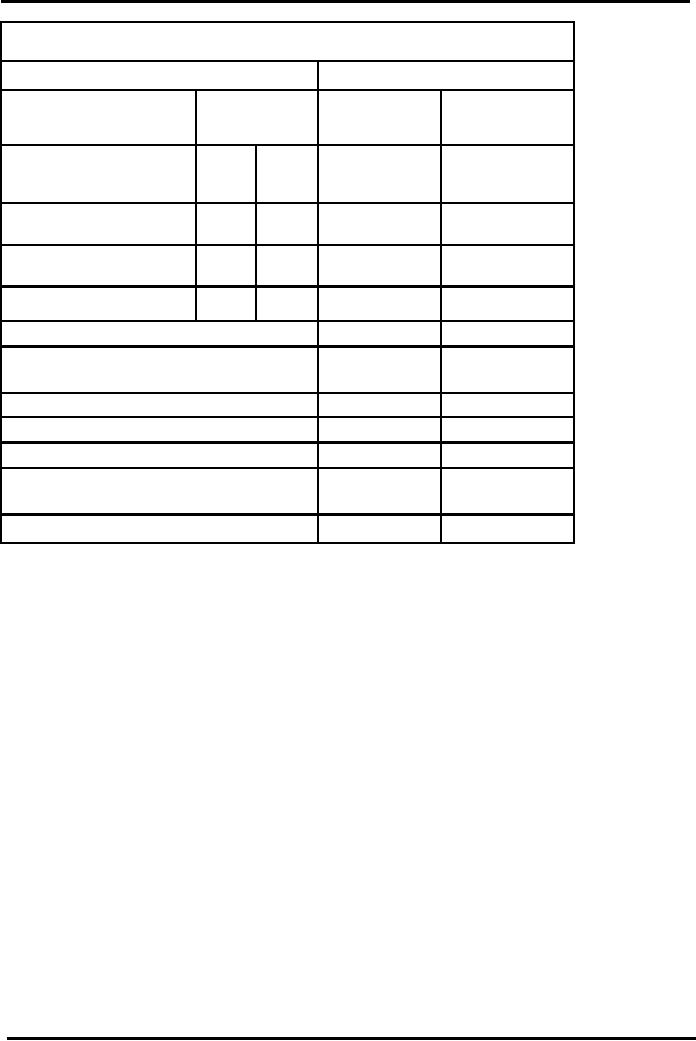
Cost
& Management Accounting
(MGT-402)
VU
Silver
Glass Manufacturers
PAYSLIP
Employee:
Syed
Imam Din
Employee
#. 256
National
Tax Number:
Social
Date:
08-10-
Tax
period:
7296849-5
Security:
Y
06
week
40
45
Pay
For Week Ending:
Hou
Rate
Amount
Rs.
Year
To Date
October
8th.
rs
Rs.
Rs.
Basic
Pay
40.0
7.50
300.00
Overtime
5.0
15.00
75.00
Shift
Allowance
2
10.00
20.00
Gross
Pay
395.00
Pension
(Employer's
pension
15.00
contribution
Rs.25.00)
Trade
union subscription
10.00
Total
Pay
370.00
16,605.00
Income
Tax
57.92
2.711.32
Provident
Fund (Employer's
Cont
30.85
Rs.36,71)
NET
PAY
281.23
Content
of the Payslip
A
payslip must show certain
items, by law. Compulsory
items in the UK are:
�
The
employer's name
�
The
employee's name
�
The
date
�
The
total gross pay, showing the
calculation where it comprises different
elements
such
as bonuses, overtime
etc
�
The
employee's pension contribution (if
there is any)
�
Other
deductions from, or adjustments to, pay. If a
set amount is deducted each
pay
day
the breakdown need not be
shown, provided the employee
was given the details
earlier
�
Total
gross pay to date for
PAYE purposes
�
Total
tax paid to date in the
current tax year and
tax due this pay
day
�
National
Insurance contributions due
this pay day
�
Net
pay.
The
payslip may also show
additional information (and often does),
such as:
�
the
employee's Payroll
Number
�
the
employee's Social Security
Number
�
the
employee's National Tax
Number
�
the
total provident fund
contributions paid by the
employee in the tax year to
date
�
the
method of payment, such as `paid through
cheque or cash etc.'
80

Cost
& Management Accounting
(MGT-402)
VU
�
employer's
provident fund contribution
for the current
period
�
employer's
provident fund contribution
for the tax year to
date
MAKING
PAYMENTS TO EMPLOYEES
Most
employers will have a set
day on which employees
should be paid, and it is
the payroll
department's
responsibility to ensure that
wages are paid on the
correct due days.
Weekly
paid employees will be paid
at least once a week,
normally on the same day
each week.
Usually
the pay day will be
either Thursday or
Friday.
Monthly
paid employees will be paid
once a month, and there
will be a formula for
determining
the
pay day. For example, this
may be:
�
the
last day of the calendar
month
�
the
last Friday or Saturday of the
calendar month
�
the
same date each month, such
as the 26th.
Employees
may be paid their wages in
several ways:
�
in
cash (but this is now
very uncommon)
�
by
cheque
�
by
bank transfer
�
through
the Banks Automated Clearing
System (BACS).
PRACTICE
QUESTIONS
1
Which
of the following does not
appear on a payslip?
A.
Gross
weekly wage for the
employee
B.
Tax
paid to date by the employee
in the tax year
C.
Deductions
paid by the employee
D.
Details
of the employee's expected
pension.
2
Which
is the most convenient way
for a large employer to pay
salaries electronically?
A.
BACS
B.
Bank
transfer
C.
By
cash
D.
By
cheque.
Elements
of Gross Pay
The
amount of pay to which an
employee is entitled may be
earned in a variety of different
ways.
These
include:
(A)
Basic pay, such as:
a.
wages paid according to the
number of hours
worked
b.
Wages paid according to the
output of the
employee.
c.
salaries, for salaried
staff
(B)
Other pay, such as:
a.
overtime pay, for extra hours
worked by the
employee
b.
shift pay, to compensate for unsocial
hours.
(C)
Bonuses and commission, such
as:
a.
bonuses paid under
bonus schemes, based on
productivity, or profitability
b.
commission paid, normally based on
sales.
Rupees
81
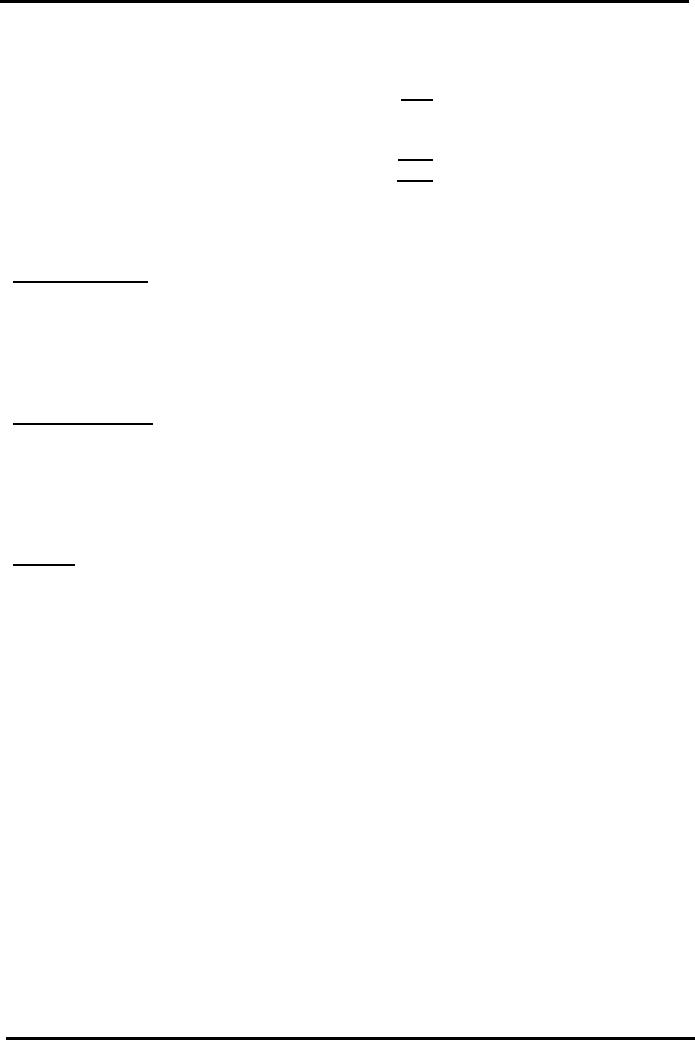
Cost
& Management Accounting
(MGT-402)
VU
Basic
Pay
****
+
Bonus
****
+Overtime
payment
****
+Other
allowance
****
Gross
pay
****
-Statutory
deduction
(***)
-Non
Statutory deduction
(***)
Net
Pay
****
Payroll
Entries
Payroll
Preparation
Payroll
expenses
100
Deduction
of income tax
5
Payroll
Payable
95
Payroll
Distribution
Work
in process
20
FOH
30
Administrative
expense
40
Selling
expenses
10
Payroll
expenses
100
Payment
Accrued
payroll
95
Bank
95
82
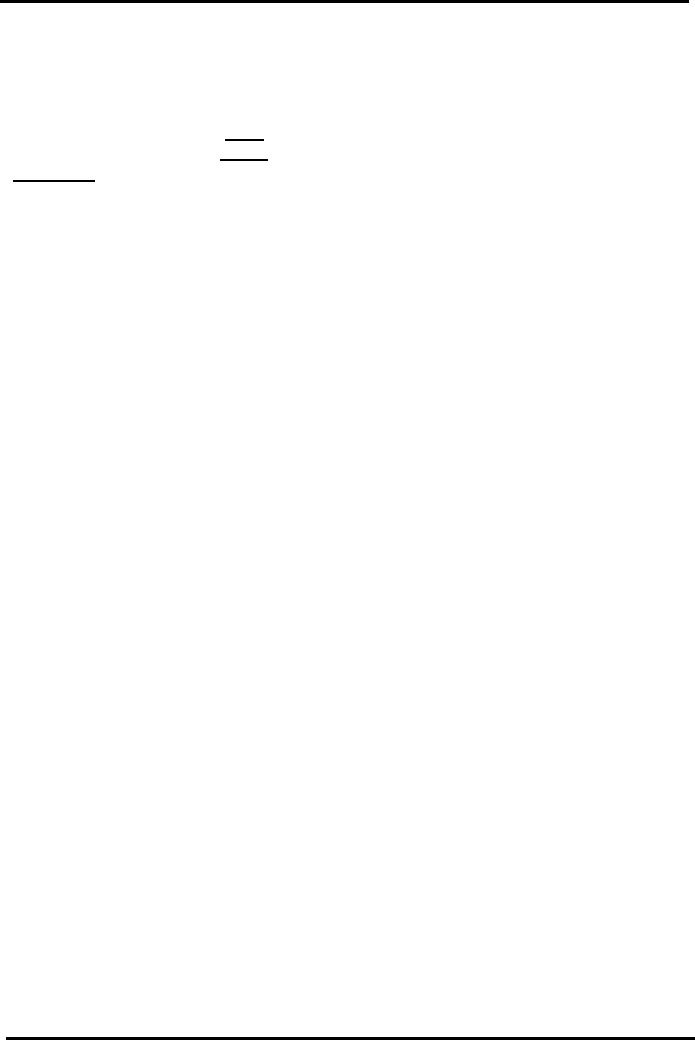
Cost
& Management Accounting
(MGT-402)
VU
PRACTICE
QUESTION
Direct
Labor
15,000
Indirect
Labor
10,000
Sales
Salaries
7,000
Administrative
Salaries
8,000
Total
40,000
Deductions
Income
tax
4,000
Group
insurance
1,000
Required:
Pass
journal entries to record Payroll
expense and its
payment
Solution
1-
Payroll
expense
40,000
Income
tax (Payable)
4,000
Group
insurance (Payable)
1,000
Payroll
Payable
35,000
2-
Payroll
payable
35,000
Voucher
payable
35,000
3-
Voucher
payable
35,000
Bank
35,000
4-
Work
in process
15,000
FOH
10,000
Selling
expense
7,000
Administrative
8,000
Payroll
expenses
40,000
83
Table of Contents:
- COST CLASSIFICATION AND COST BEHAVIOR INTRODUCTION:COST CLASSIFICATION,
- IMPORTANT TERMINOLOGIES:Cost Center, Profit Centre, Differential Cost or Incremental cost
- FINANCIAL STATEMENTS:Inventory, Direct Material Consumed, Total Factory Cost
- FINANCIAL STATEMENTS:Adjustment in the Entire Production, Adjustment in the Income Statement
- PROBLEMS IN PREPARATION OF FINANCIAL STATEMENTS:Gross Profit Margin Rate, Net Profit Ratio
- MORE ABOUT PREPARATION OF FINANCIAL STATEMENTS:Conversion Cost
- MATERIAL:Inventory, Perpetual Inventory System, Weighted Average Method (W.Avg)
- CONTROL OVER MATERIAL:Order Level, Maximum Stock Level, Danger Level
- ECONOMIC ORDERING QUANTITY:EOQ Graph, PROBLEMS
- ACCOUNTING FOR LOSSES:Spoiled output, Accounting treatment, Inventory Turnover Ratio
- LABOR:Direct Labor Cost, Mechanical Methods, MAKING PAYMENTS TO EMPLOYEES
- PAYROLL AND INCENTIVES:Systems of Wages, Premium Plans
- PIECE RATE BASE PREMIUM PLANS:Suitability of Piece Rate System, GROUP BONUS SYSTEMS
- LABOR TURNOVER AND LABOR EFFICIENCY RATIOS & FACTORY OVERHEAD COST
- ALLOCATION AND APPORTIONMENT OF FOH COST
- FACTORY OVERHEAD COST:Marketing, Research and development
- FACTORY OVERHEAD COST:Spending Variance, Capacity/Volume Variance
- JOB ORDER COSTING SYSTEM:Direct Materials, Direct Labor, Factory Overhead
- PROCESS COSTING SYSTEM:Data Collection, Cost of Completed Output
- PROCESS COSTING SYSTEM:Cost of Production Report, Quantity Schedule
- PROCESS COSTING SYSTEM:Normal Loss at the End of Process
- PROCESS COSTING SYSTEM:PRACTICE QUESTION
- PROCESS COSTING SYSTEM:Partially-processed units, Equivalent units
- PROCESS COSTING SYSTEM:Weighted average method, Cost of Production Report
- COSTING/VALUATION OF JOINT AND BY PRODUCTS:Accounting for joint products
- COSTING/VALUATION OF JOINT AND BY PRODUCTS:Problems of common costs
- MARGINAL AND ABSORPTION COSTING:Contribution Margin, Marginal cost per unit
- MARGINAL AND ABSORPTION COSTING:Contribution and profit
- COST – VOLUME – PROFIT ANALYSIS:Contribution Margin Approach & CVP Analysis
- COST – VOLUME – PROFIT ANALYSIS:Target Contribution Margin
- BREAK EVEN ANALYSIS – MARGIN OF SAFETY:Margin of Safety (MOS), Using Budget profit
- BREAKEVEN ANALYSIS – CHARTS AND GRAPHS:Usefulness of charts
- WHAT IS A BUDGET?:Budgetary control, Making a Forecast, Preparing budgets
- Production & Sales Budget:Rolling budget, Sales budget
- Production & Sales Budget:Illustration 1, Production budget
- FLEXIBLE BUDGET:Capacity and volume, Theoretical Capacity
- FLEXIBLE BUDGET:ANALYSIS OF COST BEHAVIOR, Fixed Expenses
- TYPES OF BUDGET:Format of Cash Budget,
- Complex Cash Budget & Flexible Budget:Comparing actual with original budget
- FLEXIBLE & ZERO BASE BUDGETING:Efficiency Ratio, Performance budgeting
- DECISION MAKING IN MANAGEMENT ACCOUNTING:Spare capacity costs, Sunk cost
- DECISION MAKING:Size of fund, Income statement
- DECISION MAKING:Avoidable Costs, Non-Relevant Variable Costs, Absorbed Overhead
- DECISION MAKING CHOICE OF PRODUCT (PRODUCT MIX) DECISIONS
- DECISION MAKING CHOICE OF PRODUCT (PRODUCT MIX) DECISIONS:MAKE OR BUY DECISIONS